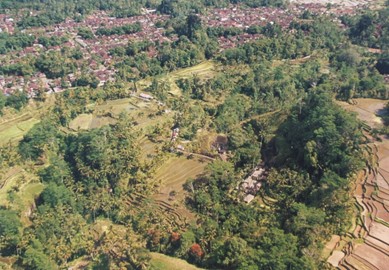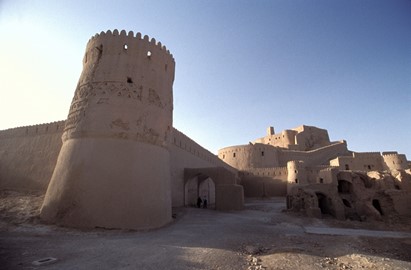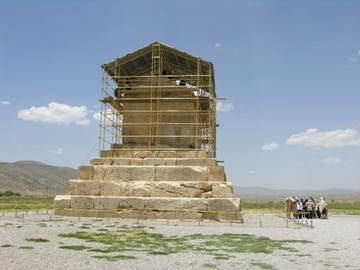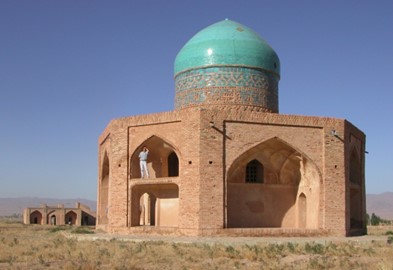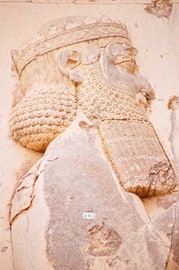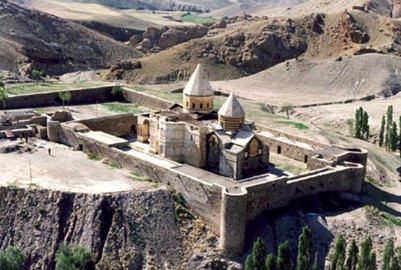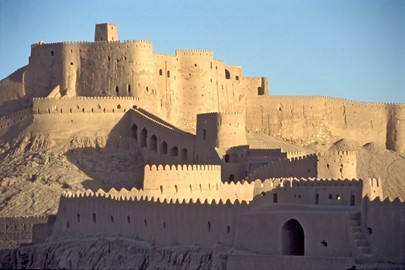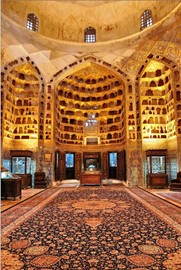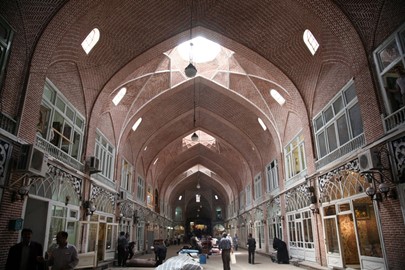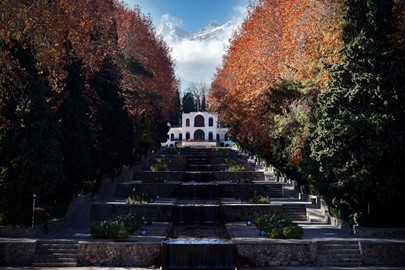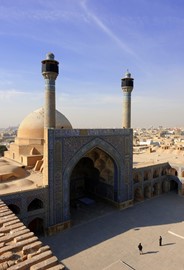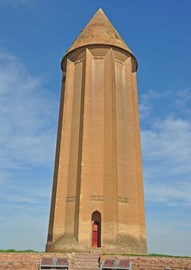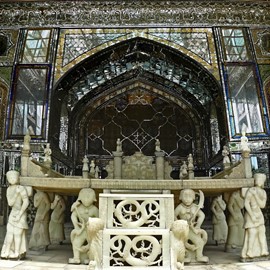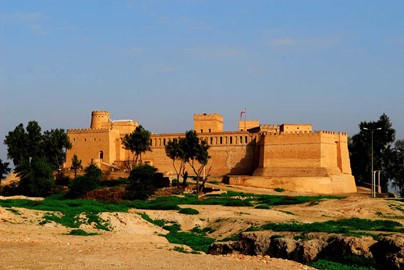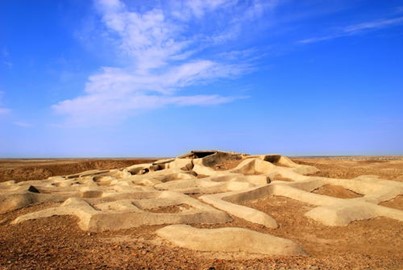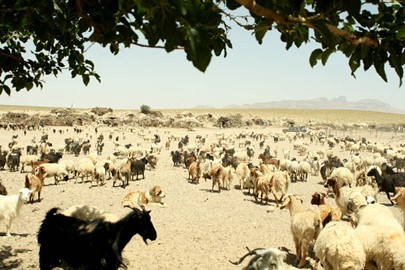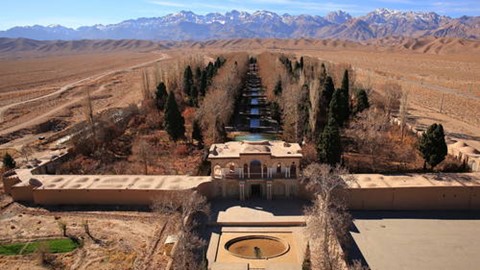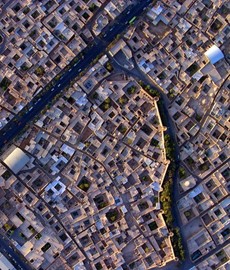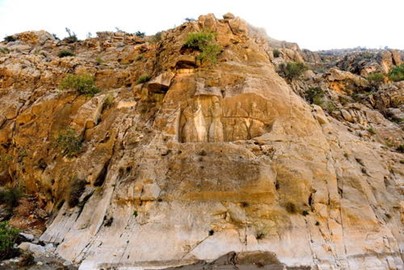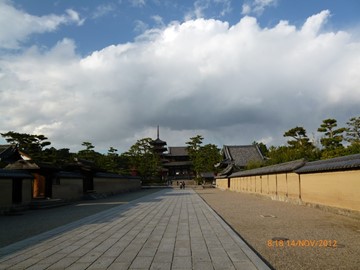region :: asia and the pacific
Bali
The Cultural Landscape of Bali, a UNESCO World Heritage site, showcases a unique blend of natural beauty and cultural heritage shaped by the Balinese Hindu philosophy of Tri Hita Karana, emphasizing harmony between humans, nature, and the spiritual realm. This living heritage is reflected in its ancient rice terraces, water temples, and traditional irrigation systems known as subak, which have sustained agricultural practices for centuries. The site exemplifies a sustainable cultural ecosystem, preserved th... Read More
Tchogha Zanbil
Tchogha Zanbil, a UNESCO World Heritage site in Iran, is an exceptionally well-preserved ancient Elamite complex dating back to around 1250 BCE. Built by King Untash-Napirisha, it features a massive ziggurat, originally five stories tall, dedicated to the god Inshushinak. The site includes temples, palaces, and intricate brickwork, showcasing advanced engineering and religious significance of the Elamite civilization.
Persepolis
Persepolis, a UNESCO World Heritage site in Iran, is an ancient ceremonial capital of the Achaemenid Empire, founded by Darius I in the 6th century BCE. Renowned for its grand palaces, intricate bas-reliefs, and monumental staircases, it exemplifies Persian architecture and artistry. The site served as a symbol of imperial power until its destruction by Alexander the Great in 330 BCE. Today, its well-preserved ruins offer valuable insights into the history and culture of one of the world’s earliest empires.... Read More
Meidan Emam
Meidan Emam, a UNESCO World Heritage site in Esfahan, Iran, is a stunning example of Persian architecture and urban planning from the Safavid era. This grand public square, constructed between 1598 and 1629 under Shah Abbas I, features intricate tile work, majestic mosques, and a harmonious layout that reflects the cultural and artistic achievements of its time. Key landmarks include the Sheikh Lotfollah Mosque, the Imam Mosque, and the Ali Qapu Palace, all showcasing exquisite design and historical signifi... Read More
Takht e Soleyman
Takht-e Soleyman, a UNESCO World Heritage site in Iran, is an ancient archaeological complex renowned for its historical and cultural significance. Dating back to the Sassanid era, it features a fortified citadel, a fire temple, and a serene lake, reflecting Zoroastrian influences and centuries of Persian civilization. The site’s well-preserved ruins and natural setting offer a glimpse into Iran’s rich past, making it a key destination for understanding the region’s heritage.
Pasargadae
Pasargadae, a UNESCO World Heritage site in Iran, is an ancient city founded by Cyrus the Great in the 6th century BCE, serving as the first capital of the Achaemenid Empire. It features the impressive Tomb of Cyrus, a simple yet monumental limestone structure, alongside remnants of palaces and gardens that showcase early Persian architecture and urban planning. The site’s historical significance lies in its representation of the empire’s cultural and political achievements, offering valuable insights into ... Read More
Soltaniyeh
Soltaniyeh, a UNESCO World Heritage site in Iran, is renowned for its stunning 14th-century mausoleum, the Dome of Soltaniyeh, which exemplifies Persian architecture with its intricate tile work and imposing brick structure. Built during the Ilkhanid period, it serves as the tomb of Mongol ruler Oljaytu and is one of the largest domed structures in the world. The site reflects a rich blend of Islamic and Mongol influences, showcasing historical engineering prowess and cultural significance. Its preservation... Read More
Bisotun
Bisotun, a UNESCO World Heritage site in Iran, is renowned for its ancient rock reliefs and inscriptions dating back to 521 BCE. The site features a multilingual inscription by Darius the Great, carved into a cliff, which celebrates his victories and divine right to rule, written in Old Persian, Elamite, and Babylonian. Alongside this, the area includes archaeological remains from various periods, such as Parthian and Sassanian ruins, showcasing its historical significance as a cultural crossroads. Bisotun ... Read More
Armenian Monastic Ensembles
The Armenian Monastic Ensembles in Iran, a UNESCO World Heritage site, consist of three historic religious complexes: St. Thaddeus Monastery, St. Stepanos Monastery, and the Chapel of Dzordzor. Dating back to the 7th century, these sites showcase exceptional Armenian architectural and artistic traditions, featuring intricate stonework, frescoes, and fortified structures. They served as key centers for religious worship, education, and cultural preservation within the Armenian Christian community. Today, the... Read More
Bam
Bam Cultural Landscape, a UNESCO World Heritage site in Iran, showcases a remarkable example of an ancient qanat irrigation system integrated with traditional desert architecture. This historic oasis features the well-preserved Arg-e Bam citadel, a sprawling mud-brick fortress, alongside date palm groves and gardens sustained by underground water channels. Recognized for its cultural and historical significance, it reflects centuries of human ingenuity in adapting to an arid environment.
Shushtar
The Shushtar Historical Hydraulic System, a UNESCO World Heritage site in Iran, is an ancient engineering marvel featuring a network of canals, tunnels, and watermills. Built during the Sassanid era, this intricate system diverts river water to irrigate agricultural lands and power mills, showcasing exceptional ingenuity. Its well-preserved structures, including bridges and waterfalls, highlight its historical and technical significance as a testament to Persian hydraulic expertise.
Ardabil
Ardabil, a UNESCO World Heritage site in Iran, is renowned for the Sheikh Safi al-Din Khānegāh and Shrine Ensemble, a masterpiece of Persian architecture and Sufi heritage. This historic complex features intricate tile work, ornate domes, and a serene courtyard, reflecting its role as a spiritual and cultural center since the 14th century. It exemplifies the artistic and religious traditions of the Safavid dynasty, drawing visitors to its well-preserved monuments and tranquil ambiance.
Tabriz Bazaar
The Tabriz Bazaar, a UNESCO World Heritage site in Iran, is a historic trading hub renowned for its vast network of covered brick structures and vibrant commercial legacy. This sprawling marketplace features intricately designed caravanserais, domed halls, and specialized sections for crafts like carpet weaving, reflecting centuries of Persian mercantile culture. Its enduring role as a key Silk Road junction highlights its architectural and economic significance.
Persian Garden
The Persian Garden, a UNESCO World Heritage site in Iran, exemplifies a timeless design of landscaped gardens that blend natural beauty with architectural elegance. Featuring symmetrical layouts, water channels, fountains, and lush vegetation, these gardens symbolize paradise in Persian culture and have influenced garden design worldwide. Recognized for their historical and aesthetic value, they reflect ancient engineering and an enduring reverence for nature.
Masjed e Jamé
The Masjed-e Jāmé of Isfahan, a UNESCO World Heritage site in Iran, is an architectural masterpiece showcasing the evolution of Persian mosque design. This grand congregational mosque features intricate tilework, soaring domes, and expansive courtyards, reflecting centuries of Islamic art and engineering from the 8th to the 17th centuries. Renowned for its historical and cultural value, it stands as a testament to the ingenuity and aesthetic brilliance of its builders.
Gonbad e Qabus
Gonbad-e Qabus, a UNESCO World Heritage site in Iran, is an extraordinary 11th-century brick tower renowned for its architectural brilliance and historical significance. This 53-meter-tall mausoleum, built for the Ziyarid ruler Qabus ibn Wushmgir, features a conical roof and intricate geometric design, exemplifying early Islamic engineering. Set against a striking natural backdrop, it stands as a testament to Persian cultural heritage and ingenuity.
Golestan Palace
Golestan Palace, a UNESCO World Heritage site in Iran, is a stunning royal complex showcasing Persian architectural brilliance and opulence. This historic site features ornate tilework, mirrored halls, and elegant gardens, reflecting the grandeur of the Qajar dynasty. Recognized for its cultural value, it blends traditional design with European influences, offering a glimpse into Iran’s royal heritage.
Susa
Susa, a UNESCO World Heritage site in Iran, is an ancient city renowned for its archaeological significance, spanning multiple civilizations from the Elamite to the Persian periods. It features remnants of grand palaces, a ziggurat, and intricate artifacts that highlight its role as a political and cultural hub. This site exemplifies thousands of years of urban development and historical continuity in a strategic desert region.
Shahr i Sokhta
Shahr-i Sokhta, a UNESCO World Heritage site in Iran, is an ancient Bronze Age city renowned for its archaeological significance. This well-preserved desert settlement features mud-brick structures, intricate artifacts, and evidence of early urban planning, including a necropolis with diverse burial practices. It highlights advanced craftsmanship and trade networks from over 5,000 years ago, offering insights into one of the region's earliest civilizations.
Maymand
Maymand, a UNESCO World Heritage site in Iran, is an ancient troglodyte village renowned for its rock-carved dwellings and enduring cultural traditions. Nestled in a rugged landscape, this living heritage site features hand-dug cave homes, some inhabited for over 3,000 years, alongside seasonal settlements and traditional pastoral practices. It exemplifies human resilience and adaptation to a harsh environment, preserving a unique way of life.
Lut Desert
The Lut Desert, a UNESCO World Heritage site in Iran, is a striking natural wonder renowned for its extreme heat and unique geological formations. This vast desert features towering sand dunes, dramatic yardangs sculpted by wind erosion, and one of the hottest land surfaces on Earth. Its otherworldly landscape highlights the beauty and resilience of life in harsh arid conditions, earning it global recognition for its scientific and aesthetic value.
Persian Qanat
The Persian Qanat, a UNESCO World Heritage site in Iran, represents an ancient engineering marvel designed to harness underground water in arid regions. This sustainable irrigation system features a network of gently sloping tunnels, vertical shafts, and surface channels that distribute water to fields and settlements. Recognized for its historical and cultural value, it highlights traditional Persian ingenuity in water management and adaptation to challenging environments.
Yazd
The Historic City of Yazd, a UNESCO World Heritage site in Iran, is renowned for its ancient desert architecture and innovative adaptation to a harsh climate. This well-preserved urban center features a maze of mud-brick buildings, wind towers (badgirs) for natural cooling, and an extensive qanat water system. Its cultural significance lies in its testament to sustainable living and traditional craftsmanship in an arid region.
Sassanid
The Sassanid Archaeological Landscape, a UNESCO World Heritage site in Iran, preserves an exceptional collection of monumental structures from the Sassanid Empire (3rd–7th centuries CE). This site features ancient palaces, fortifications, and rock reliefs that highlight the empire’s architectural prowess and artistic heritage. It exemplifies the Sassanid influence on urban planning and engineering in a strategic historical context.
Horyu ji
The Buddhist Monuments in the Horyu-ji Area, a UNESCO World Heritage site in Japan, represent one of the oldest surviving wooden architectural ensembles in the world, dating back to the 7th and 8th centuries. This collection includes the Horyu-ji temple and its pagoda, showcasing early Buddhist art and architecture influenced by Chinese and Korean styles. Recognized for its historical and cultural value, it offers insight into the spread of Buddhism and its impact on Japanese civilization.
